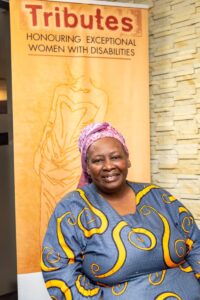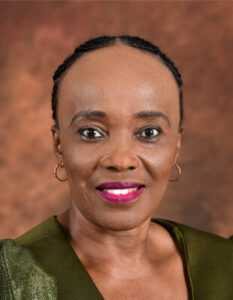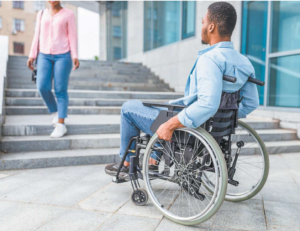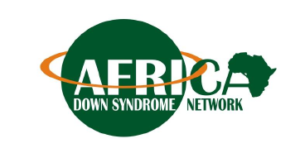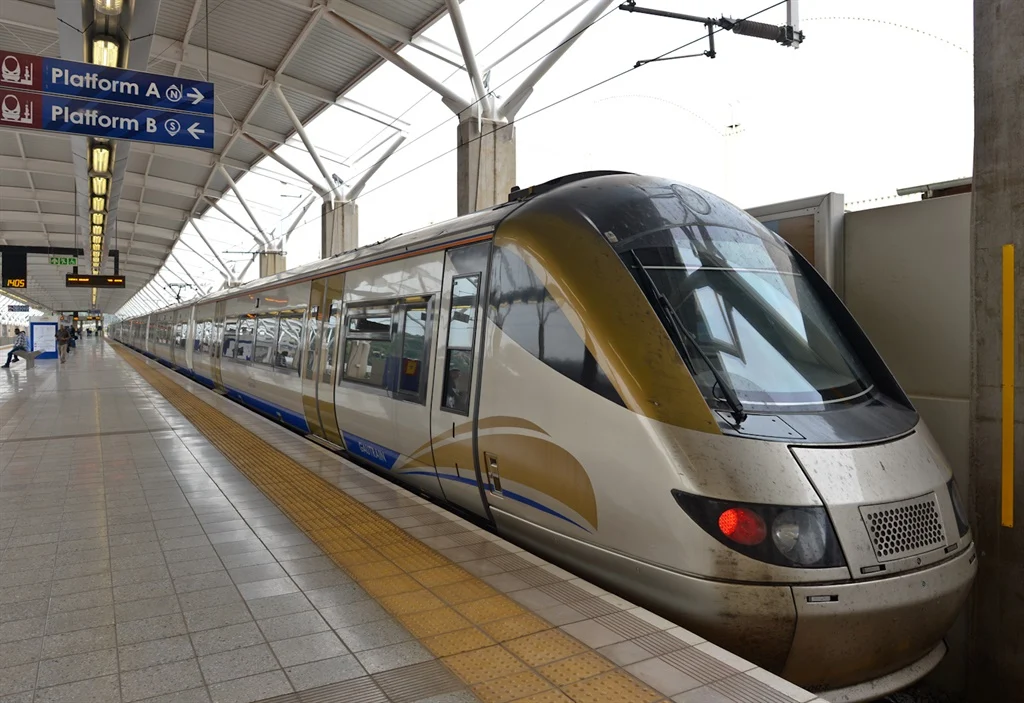
Transport Month is a reflection time on how inclusive South Africa's transport system is.
Compiled by Simon Manda
October marks Transport Month in South Africa, a time when we collectively reflect on the state of our nation’s mobility infrastructure. Yet for the 7.5% of South Africans with disabilities, this month represents more than statistics and policy papers—it embodies the daily struggle for dignity, independence, and equal participation in society. As we commemorate this year’s focus on integrated public transport networks, we must confront an uncomfortable truth: our transport system remains largely inaccessible to millions of citizens.
The Promise and the Reality
Government investments in transport infrastructure through the Nine-Point Plan aim to stimulate development, create jobs, and build an integrated public transport network that connects people with work, education, and entertainment. This year’s Transport Month emphasises integration—bringing together PRASA, bus rapid transit systems, and the minibus taxi industry into a cohesive network. These are laudable objectives, but for many South Africans with disabilities, the gap between policy and lived experience remains achingly wide.
Consider the story of Aphelele Rangula. At just 18 years old, this young woman from Blue Downs, Cape Town, carries a weight far heavier than her wheelchair. Born without a disability, her life changed dramatically at age four when seizures led to a diagnosis of cerebral palsy. Today, she navigates a world that constantly reminds her of her difference—not because of her condition, but because society fails to accommodate it.
Rangula reflects that she never had a problem with being disabled until she experienced the outside world and unfamiliar spaces. That traumatic encounter came in the form of a minibus taxi journey where fellow passengers complained about her wheelchair taking up space. The driver, facing mounting pressure, forced her to disembark before reaching her destination. The humiliation of that moment fundamentally altered how she moves through the city. Now, she avoids public transport entirely, relying instead on e-hailing services that consume a devastating portion of her R2,315 monthly disability grant—money meant to support a household of six.
Her attempts to access the City of Cape Town’s Dial-a-Ride service, specifically designed for people with disabilities, have been unsuccessful. She applied in 2019. Six years later, she has yet to receive a response. The City claims no record of her application, a bureaucratic dismissal that exemplifies the broader systemic failures facing persons with disabilities.
Two Realities: Physical Accessibility Without Economic Access
Then there is Dayyaan Edries, from Bo-Kaap, Cape Town, who was born with cerebral palsy. Edries’s story highlights a distinct aspect of the accessibility crisis—the intersection of disability, unemployment, and spatial exclusion. For over a year, he searched for employment, his wheelchair a visible marker that seemed to trigger an invisible barrier with potential employers.
Edries observes that there appears to be a fear among employers when it comes to hiring disabled people, his words heavy with the weight of repeated rejection. He has finally secured a learnership, a small victory in a landscape of exclusion. However, even this achievement is overshadowed by transportation challenges. MyCiTi buses, praised for their wheelchair accessibility, don’t service his neighbourhood. His father has become his primary means of transport—a loving arrangement that nonetheless underscores his lack of independent mobility.
Edries receives a disability grant and grant-in-aid totalling R2,845 per month. Like Rangula, this sum is insufficient for true independence. He believes the government is aware of the issues facing persons with disabilities and is making changes. However, many would say it’s not enough because there are still places that remain inaccessible, he says with diplomatic restraint, his measured words masking more profound frustration.
Both Rangula and Edries’s stories reveal a cruel irony: South Africa has accessible transport options that remain functionally inaccessible due to geography, economics, or both.
The Gautrain Paradox: World-Class Design, Elite Pricing
The Gautrain represents South African engineering at its finest—a rapid rail system that has prioritised accessibility from inception. Every station features wider entrance gates for mobility devices, lifts to platforms, and level boarding that allows wheelchair users to embark and disembark with ease. Every second train and feeder bus is equipped with wheelchair ramps and designated bays with secure strapping systems. The system accommodates sight and hearing impairments through colour contrasts, tactile guidance, and audio announcements.
Yet for persons with disabilities, the Gautrain remains largely aspirational. A peak-hour single trip from Hatfield to OR Tambo Airport costs R258. Monthly tickets range from R1,422 to R4,114, depending on routes. For someone receiving a disability grant of R2,315 per month—or even Edries’s combined R2,845—regular Gautrain use is financially impossible.
The recent introduction of the KlevaMova programme, offering 50% discounts to SASSA disability grant recipients, represents progress. However, even with this discount, the costs remain prohibitive for many who must also cover rent, food, and medical expenses. A discounted monthly ticket would still cost between R711 and R2,057, consuming 31% to 89% of a disability grant. The Gautrain thus exemplifies a troubling pattern: creating physical accessibility whilst maintaining economic barriers that effectively exclude the very people these accommodations are meant to serve.
The National Rail Crisis: PRASA’s Long Journey to Accessibility
Whilst the Gautrain serves a small geographic area, PRASA’s Metrorail network carries millions across urban centres nationwide. Here, the accessibility picture is even bleaker. In 2016, PRASA promised that plans to make trains accessible were “virtually complete.” Nine years later, this remains largely a broken promise.
The new trains manufactured by Gibela do include wheelchair spaces—a significant improvement. However, wheelchair users face insurmountable challenges before even boarding these trains. Most stations remain inaccessible, with numerous stairways, few ramps, and lifts that have been broken for years. Even at stations where platforms are theoretically accessible, the gap between platform and train creates a physical barrier that requires assistance to navigate.
PRASA has developed a universal access policy with norms and standards and has committed to accelerating work on station accessibility and level boarding. A consultant has been engaged to examine station access, platform access, and the interface between the platform and the train. Yet no firm timelines have been provided, and platform rectification—acknowledged as a “huge gap” by PRASA leadership—comes with massive costs in a budget-constrained environment.
The irony is stark: PRASA is investing over R12 billion in capital projects and has recovered 31 of 40 rail corridors after widespread theft and vandalism during the COVID-19 pandemic. Passenger numbers have surged from 15 million to 40 million annually—a 167% increase. The agency is manufacturing 600 new trains locally, creating thousands of jobs and positioning South Africa as a potential hub for train manufacturing in Africa. Yet amidst this recovery and modernisation, fundamental accessibility remains an afterthought rather than a priority.
Jeremy Opperman, a board member of the Western Cape Network on Disability, puts it bluntly: the trains are “simply not accessible.” PRASA has established a disability forum to include persons with disabilities in design decisions—a positive step towards the principle of “nothing about us without us.” However, participation in planning means little if implementation remains perpetually delayed.
The Accessibility Gap in Bus Rapid Transit
South Africa has made genuine strides with Bus Rapid Transit systems. MyCiTi in Cape Town features tactile paving allocated wheelchair spaces with safety straps, and induction loops for hearing aid users. Johannesburg’s Rea Vaya, Gautrain buses, and Tshwane’s A Re Yeng service similarly incorporate universal design principles.
Yet challenges persist. Anthony Ghillino, a quadriplegic and board member of the Western Cape Network on Disability, gives MyCiTi a mixed review. Whilst praising the concept, he notes that wheelchair belts don’t fully tighten around some chairs, and equipment malfunctions are common. More fundamentally, MyCiTi doesn’t collect data on how many commuters with disabilities use the service, making it impossible to assess true accessibility or plan improvements effectively.
These BRT systems often don’t reach some of the townships and informal settlements where many persons with disabilities reside. For Rangula in Blue Downs and countless others, these world-class accessible buses might as well not exist.
The Minibus Taxi Conundrum
The minibus taxi industry carries approximately 75% of South African commuters daily, making it the nation’s primary mode of transport. Yet for persons with disabilities, this vital lifeline remains largely out of reach. Makhosandile Tumana, SANTACO’s Western Cape representative, acknowledges the challenge with refreshing honesty: “We understand that there are persons with disabilities, and we need to accommodate them. When the Toyota Quantum was introduced, there was space to accommodate wheelchair users, but I don’t think we are doing enough to accommodate them.”
This admission reveals the complexity of the challenge. It is not merely about vehicle design—it reflects deeper issues of training, awareness, and economic pressure. Taxi operators working on razor-thin margins may view accessibility modifications as unaffordable luxuries rather than essential accommodations for human rights. The competitive and fragmented nature of the industry makes it challenging to implement and enforce coordinated accessibility standards.
Bridging this gap requires not only regulation but also collaborative problem-solving involving the government, operators, and disability advocacy groups. It demands financial support for vehicle modifications, comprehensive driver training, and a fundamental shift in how the industry views passengers with disabilities—not as burdens but as customers with rights.
The Dial-a-Ride Crisis: When Community Mobilises
Few issues crystallised the accessibility crisis more sharply than Cape Town’s attempted curtailment of its Dial-a-Ride service this year. In August, the City announced that, starting from September, the service would only accommodate wheelchair users and individuals with severe walking impairments, excluding those with visual and cognitive impairments, the elderly, and organisations serving the disability community.
The service had been fully subscribed since 2018, with no new applicants accepted—a seven-year waitlist that speaks volumes about unmet demand. The City cited budgetary constraints, noting that the service achieves only 3% cost recovery, with 97% subsidised primarily from the rates base and a provincial grant. It claimed a shortfall of R1 million per month made the service unsustainable.
When the cuts were announced, the response was swift and decisive. Sergil January, awareness officer at the Cape Town Society for the Blind, called the changes “deeply upsetting.” Disability activists from Revolution Disability, QuadPara Association, and #UniteBehind disrupted a City transport meeting, demanding answers. The Western Cape Network on Disability launched an urgent court application and started an online petition. COSATU condemned the decision, calling it “cruel and shortsighted.”
The network’s legal team, represented by the People’s Legal Centre, secured a settlement that paused the decision, requiring the City to reverse any reductions already implemented and giving disability organisations until October to file a formal review application.
This mobilisation demonstrated something crucial: when the disability community speaks with a unified voice, change becomes possible. It also exposed the precarious nature of disability services that depend on discretionary municipal budgets rather than being enshrined as fundamental rights. As the network’s legal team noted, the City’s annual budget of R84.1 billion makes the R1 million monthly shortfall seem less like an insurmountable crisis and more like a question of political priorities.
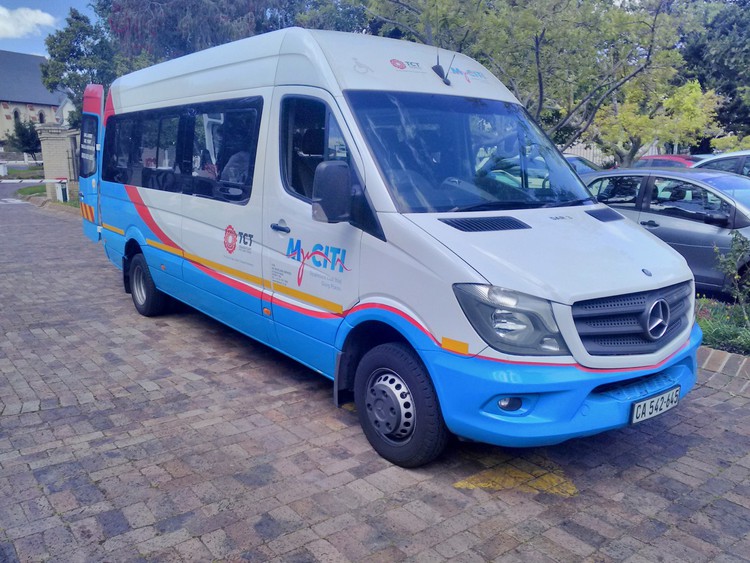
Innovation and Hope: Technology as Enabler
Amidst these challenges, innovation offers glimmers of hope. The National Council of and for Persons with Disabilities’ Lubabalo Mbeki’s OneRide platform, showcased at the 2023 South African Innovation Summit, provides an online booking system connecting persons with disabilities to accessible vehicles and trained drivers for all transportation needs—work, medical appointments, shopping, and leisure. Supported by the Technology Innovation Agency, OneRide was selected as one of Africa’s most promising tech startups addressing accessibility.
The platform demonstrates how technology can bridge gaps left by traditional transport systems, offering the kind of on-demand, dignified service that should be standard rather than innovative. OneRide planned to officially launch in early 2024 after completing testing, representing the kind of grassroots innovation that emerges when persons with disabilities are empowered to solve their own mobility challenges.
TIA and the SAB Foundation have formed a strategic partnership investing R28.6 million in social innovation and disability empowerment. Since 2010, the SAB Foundation has supported 143 social innovators with over R73 million in funding. Their Social Innovation and Disability Empowerment Awards have funded programmes including Uku’hamba Prosthetics and Orthotics, Breede Valley APD Business Units, and iSchool Africa, which empowers deaf youth with digital skills.
In August 2025, TIA launched the Disability Technology and Innovation Programme—a first-of-its-kind initiative placing disability inclusion at the centre of South Africa’s innovation agenda. The programme includes a national database of disability technologies and a dedicated Centre for Innovation and Entrepreneurship for Rural Assisted Devices, operated by Shonaquip and funded by TIA, serving as a national testing site for inclusive products.
E-hailing platforms, such as Uber and Bolt, have also expanded mobility options. For Rangula, Uber drivers are generally kind and assist with her wheelchair. However, affordability remains the critical barrier. Living in Blue Downs and relying on e-hailing services for all transport needs quickly depletes her disability grant, forcing impossible choices between mobility and other basic needs.
The Role of Research, Advocacy, and Policy
South African universities are contributing vital research on inclusive transport. Recent studies conducted by the City of Tshwane have examined the service quality barriers faced by persons with disabilities, revealing challenges including a lack of transport information, the absence of stop announcements, and widespread physical accessibility issues. Research from the University of Cape Town’s Centre for Transport Studies has mapped transport policies across 29 African countries, demonstrating how inadequate implementation leads to social isolation for persons with disabilities.
The National Council of and for Persons with Disabilities continues its eight-decade advocacy work, running practical programmes that enhance mobility and independence. These include facilitating applications for vehicle import rebates, disability parking permits, and beach access permits. NCPD’s transport programmes recognise that mobility extends beyond daily commuting—it encompasses the freedom to access beaches, travel between provinces, and participate fully in South African life.
However, advocacy organisations repeatedly stress that persons with disabilities want to be part of solution design, not merely recipients of services decided without their input. The Dial-a-Ride controversy exemplified this frustration: the City made its decision without consulting users or conducting public participation, claiming that since it was a budgetary issue, consultation would serve no purpose. This attitude—that financial constraints override participation rights—fundamentally misunderstands both the Constitution and the UN Convention on the Rights of Persons with Disabilities, which South Africa ratified in 2007.
President Cyril Ramaphosa, addressing the Transport Summit on Universal Accessibility in 2024, acknowledged that “the goal of a universally accessible national transport system is not only within reach. It is also a vital part of our efforts to build a South Africa that truly belongs to all who live in it.” The question is whether this rhetorical commitment will translate into budgetary allocations, enforcement mechanisms, and the political will to prioritise accessibility when resources are constrained.
The Missing Voice: SATC’s Role in Accessibility Discourse
The annual Southern African Transport Conference has, for over four decades, served as the premier forum for transport dialogue in the region. Endorsed by the Department of Transport with the Minister as patron, SATC attracts over 700 delegates annually—policymakers, academics, industry leaders, and researchers—all gathering to debate current transport issues and share innovative solutions.
The 2025 conference, held in July at the CSIR International Convention Centre in Pretoria under the theme “Mobility Solutions to Southern African Challenges,” exemplified both the promise and limitations of such platforms.
The conference provided space for discussion on how to deliver “optimum, effective, and efficient transport solutions to improve service delivery to better respond as a sector, to the needs of all users of our transport systems.” Those final words—”all users”—are critical; yet, the extent to which persons with disabilities are featured prominently in plenary sessions, ministerial addresses, and technical presentations remains unclear.
Transport conferences can be powerful catalysts for change when they elevate marginalised voices and hold decision-makers accountable. They can showcase innovations like OneRide, facilitate knowledge exchange between municipalities on accessibility best practices, and create pressure for the implementation of universal design principles. However, when disability issues are relegated to single sessions or occasional papers rather than integrated throughout the programme, opportunities for systemic transformation are lost.
The conference’s capacity-building focus—offering courses alongside paper presentations—presents particular potential for accessibility training. Have transport planners, engineers, and operators been required to complete modules on universal design? Are disability organisations invited not merely as research subjects but as co-presenters and plenary speakers? Is the conference venue itself fully accessible, modelling the inclusive transport infrastructure it discusses?
These questions matter because forums like SATC shape the transport agenda. They influence which issues receive funding, which research questions are pursued, and which innovations are scaled. When disability accessibility is treated as a specialised concern rather than a fundamental requirement, it reinforces the marginalisation that persons with disabilities experience daily.
This Transport Month, as we reflect on integrated networks and modal connections, we must ask: Where are the platforms for persons with disabilities to speak about their transport needs with the same authority as industry experts? When will universal accessibility move from the conference sidelines to the conference centrepiece?
Moving Forward: From Rhetoric to Reality
This Transport Month reminds us that proper integration means more than connecting different transport modes—it means ensuring every South African, regardless of ability, can move through our cities with dignity and independence. Several concrete steps can accelerate progress:
First, recognise accessible transport as a human right, not a charitable service. The Constitution guarantees freedom of movement. For persons with disabilities, this freedom requires accessible transport infrastructure. Budget constraints are real, but they cannot be used as a justification for systemic exclusion. Other essential services—such as policing, healthcare, and education—face similar pressures but are not eliminated.
Second, conduct comprehensive disability accessibility audits of all public transport systems, with results publicly available and tied to funding. The Public Transport Network Grant already includes conditions on universal accessibility for ten municipalities. These conditions must be strengthened, monitored rigorously, and expanded to all transport operators receiving public subsidies.
Third, embed disability inclusion in transport procurement processes from the earliest stages, rather than as an afterthought. New trains, buses, and stations should meet universal design standards before construction begins. Retrofitting is expensive, and often, inadequate prevention is more cost-effective than cure.
Fourth, mandate comprehensive training for all transport staff—drivers, station personnel, security officers—on disability etiquette, assistance techniques, and legal obligations. Such training should be developed in partnership with disability organisations, ensuring it reflects lived experience rather than able-bodied assumptions.
Fifth, persons with disabilities must be meaningfully involved in transport planning from the earliest stages. PRASA’s disability forum is a step forward, but consultation must occur before decisions are made, not after. “Nothing about us without us” must be more than a slogan—it must be embedded in governance structures, budgetary processes, and accountability mechanisms.
Sixth, develop creative funding models that don’t place the burden solely on struggling municipalities. The private sector, through corporate social investment and partnerships such as the TIA-SAB Foundation collaboration, can help expand accessible transportation options. E-hailing platforms, benefiting from South Africa’s transport market, should be required to contribute to accessibility initiatives. The national government must provide greater support to municipalities for disability services, recognising that local governments cannot bear this constitutional obligation alone.
Finally, collect and publish data on transport usage by persons with disabilities. MyCiTi’s inability to provide statistics on passengers with disabilities exemplifies a broader problem: how can we improve what we don’t measure? Comprehensive data collection, disaggregated by disability type, location, and socioeconomic status, is essential for evidence-based policy and accountability.
Conclusion: The Road Ahead
As we mark Transport Month 2025, let us be honest about our current state. We have world-class accessible trains serving elite corridors. We have innovative BRT systems with limited geographic reach. We have a taxi industry that moves 75% of the population but largely excludes persons with disabilities. We have a commuter rail network recovering from vandalism, but still inaccessible at the most basic level. We have grassroots innovations, such as OneRide, emerging from the disability community itself, even as government services face cuts.
Aphelele Rangula shouldn’t have to choose between facing humiliation on a taxi or spending money she doesn’t have on e-hailing services. Dayyaan Edries shouldn’t have to rely entirely on his father because MyCiTi doesn’t service his neighbourhood. The thousands on Dial-a-Ride’s waiting list shouldn’t have to wait years for basic mobility. Wheelchair users shouldn’t face broken lifts at train stations for years on end. Blind commuters shouldn’t be excluded from accessible transport because budgets are tight.
These are not merely unfortunate inconveniences. They are constitutional violations. They are barriers to employment, education, healthcare, and social participation. They are daily reminders that our society still views persons with disabilities as second-class citizens whose needs can be deferred indefinitely.
As we mark Transport Month 2025, let us commit not just to building integrated transport networks, but to building an integrated society where mobility is a right, not a privilege. The innovations are emerging. The research is clear. The community is mobilised. The legal frameworks exist. What we need now is the political will to transform accessibility from an aspiration into action, from a policy document into a lived reality.
Transport Month 2025 challenges us to ask: Are we building a transport system that works for some South Africans, or for all South Africans? The answer will define our national character for generations to come. In the words of the disability rights movement: nothing about us without us. It’s time we listened.

